Choosing the Right Pallet Inverter for Thailand's Demands in Manual Handling in the Food & Pharma Industries
In Thailand's fast-growing food and pharmaceutical sectors, you face constant pressure. You need to meet strict hygiene standards, protect your workers, and keep your production line moving efficiently. Relying on manual handling to switch pallets is a huge risk. It’s slow, it opens the door to contamination, and it can lead to costly worker injuries. Every time an employee manually restacks a load, you're gambling with product safety and your company's reputation.
Choosing the right pallet inverter for Thailand's food and pharma industries means prioritizing several critical factors. You must select a machine built from hygienic materials like stainless steel that complies with GMP and HACCP standards. The inverter must also have the correct load capacity and cycle speed for your specific products. Most importantly, it should offer the right level of automation to drastically reduce manual handling, thereby minimizing contamination risks and improving overall operational efficiency.
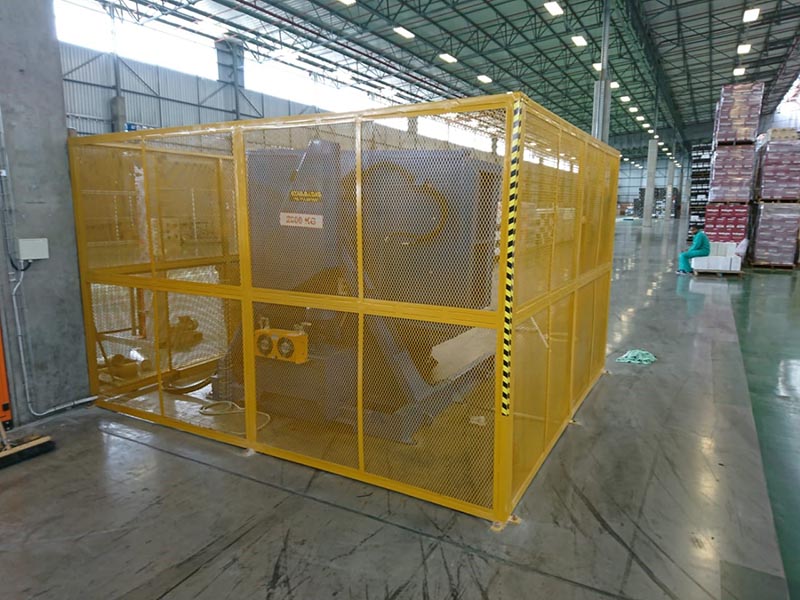
I've spent my entire career in the packing machine industry, first as an engineer and now as a factory owner. I’ve seen firsthand how the right piece of equipment can transform a business. A pallet inverter isn't just a machine; it's a solution to some of the biggest challenges you face. It’s about creating a safer, cleaner, and more profitable operation. But not all inverters are created equal. Let's break down exactly what you need to look for to make the best choice for your facility in Thailand.
How do GMP and HACCP regulations in Thailand influence pallet inverter design?
Are you worried about passing your next audit? In the food and pharma industries, regulations like Good Manufacturing Practices (GMP) and Hazard Analysis and Critical Control Points (HACCP) are not just suggestions. They are strict rules. Using the wrong equipment can lead to failed inspections, forced recalls, and serious damage to your brand. You might think any machine that moves a pallet is good enough, but an auditor will see it very differently. They see surfaces that can trap bacteria, materials that can corrode, and processes that introduce contamination.
A pallet inverter designed for compliance with Thai GMP and HACCP standards is fundamentally different from a standard industrial model. It must be built with hygienic principles at its core. This means using specific materials like food-grade stainless steel, ensuring all surfaces are smooth and easy to clean, and eliminating any areas where contaminants could hide. The design must actively prevent product contamination, not just move a load from one pallet to another.
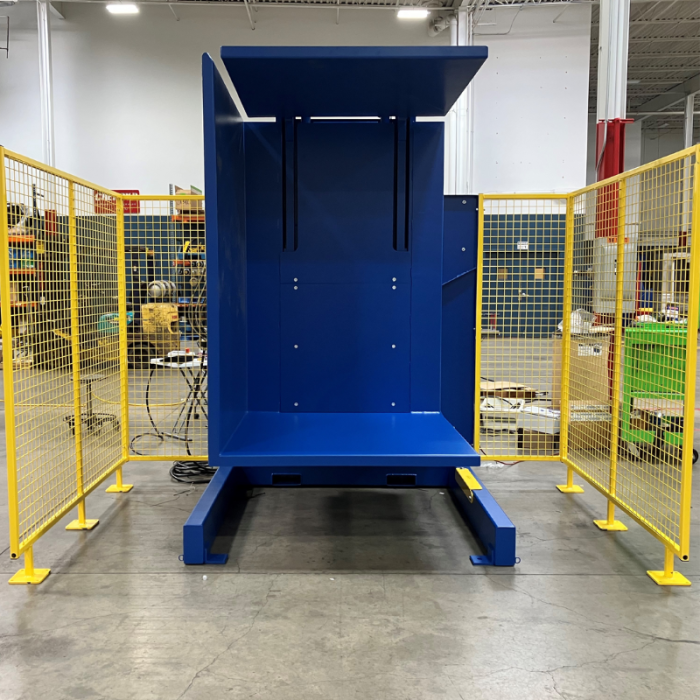
I remember a client who bought a standard, painted steel pallet inverter for their food processing plant to save money. During a regulatory audit, the inspector pointed out microscopic paint chips near the clamping mechanism. The risk of those chips ending up in the product was too high. They had to stop the line and replace the machine, which cost them far more in downtime and new equipment than they had initially saved. This is why understanding the details of compliant design is so critical. It’s not an expense; it’s an investment in your company’s security and future.
Materials and Construction are Non-Negotiable
The first thing any auditor will look at is what your machine is made of. For food and pharma applications in Thailand, this is a simple choice: stainless steel. But even then, there are levels of quality. Grade 304 stainless steel is the common standard for food contact surfaces. It offers excellent corrosion resistance. For pharmaceutical or high-saline food products, you may need to upgrade to Grade 316 stainless steel. It contains molybdenum, which provides superior resistance to chlorides and other harsh chemicals.
The construction itself is just as important. Welds must be continuous, smooth, and polished. Any gaps, pits, or rough welds are perfect breeding grounds for bacteria. An open-frame design is often preferred over a boxed-in one. This allows your cleaning crews to easily access every part of the machine for washdowns. There should be no hollow tubes or cavities that are not hermetically sealed, as these can trap moisture and harbor microbial growth. Every surface should be designed to shed water, preventing pooling and contamination.
Design for Easy and Effective Cleaning
A compliant pallet inverter must be easy to clean and sanitize. This concept is often called "hygienic design." It means eliminating any feature that makes cleaning difficult. Think about sharp corners, hidden ledges, or tight crevices. These are all red flags. A well-designed machine will have rounded corners and sloped surfaces. It will provide clear access for your sanitation team to see and clean every part that could potentially come into contact with the product or its immediate environment.
Here is a breakdown of key design features for cleanability:
| Feature | Poor Hygienic Design | Good Hygienic Design | Why It Matters |
|---|---|---|---|
| Frame | Boxed-in, hollow tubing | Open-frame, solid members | Prevents hidden contamination, allows 360-degree access. |
| Welds | Rough, intermittent, pitted | Smooth, continuous, polished | Eliminates crevices where bacteria can grow. |
| Surfaces | Horizontal ledges, flat tops | Sloped surfaces, rounded edges | Promotes water runoff, prevents pooling and buildup. |
| Fasteners | Exposed threads, hex bolts | Hygienic fasteners, sealed bolts | Reduces areas for contaminants to get trapped. |
| Accessibility | Guards are hard to remove | Tool-less removal of guards | Ensures that sanitation crews can perform thorough cleaning. |
The Importance of Documentation and Certification
When you buy a pallet inverter, you are also buying a promise. The manufacturer should be able to prove that their machine meets the standards they claim. This proof comes in the form of documentation. Ask for material traceability certificates for the stainless steel. Request documentation that outlines the machine's compliance with GMP principles. A reputable supplier will have this information readily available. This paperwork is crucial for your own internal quality control and will be essential during regulatory inspections. A supplier who cannot provide this documentation is a major risk. It suggests they don't understand the specific needs of your industry, and their equipment may not hold up under scrutiny.
What are the key differences between hydraulic and electro-mechanical pallet inverters for these industries?
You're standing in your facility. You know you need an inverter, but now you face a technical choice: hydraulic or electro-mechanical? It sounds like a small detail, but it has huge implications for your operation, especially in the food and pharma world. A hydraulic system might be powerful and seem robust, but what happens if a hose leaks? The thought of hydraulic fluid contaminating a batch of medicine or food is a nightmare. This single risk can stop a production line and ruin your products.
The key difference lies in how the machines are powered and the risks associated with each system. A hydraulic pallet inverter uses fluid pressure to clamp and rotate loads, making it very powerful but carrying a significant contamination risk from potential leaks. An electro-mechanical inverter uses electric motors and gears, which eliminates the risk of fluid contamination, offering a much cleaner and more precise operation suitable for sensitive environments. For Thailand's food and pharma sectors, this distinction is often the most important factor in the decision-making process.
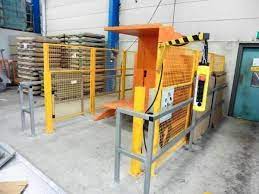
This choice reminds me of my early days as an engineer. We were designing a system for a bakery. The owner was focused on the heavy loads of flour and sugar, so he leaned toward a powerful hydraulic system. I had to explain that even a tiny, unnoticed drip of oil onto the floor could be aerosolized into the air or tracked around by workers, eventually finding its way into the dough. The risk was too great. We ended up specifying an electro-mechanical system. It was a slightly higher initial investment, but it gave him peace of mind and guaranteed compliance. Let's look at the pros and cons more closely.
The Power and Peril of Hydraulics
Hydraulic systems are the workhorses of the industrial world. They generate immense power from a relatively small motor and pump, making them ideal for very heavy or unevenly balanced loads. They are known for their durability and can often withstand a more rugged operational environment. If you were moving concrete blocks or engine parts, a hydraulic inverter would be a fantastic choice.
However, in a food or pharmaceutical plant, their greatest strength becomes their biggest weakness. The entire system relies on high-pressure hoses, seals, and cylinders containing hydraulic fluid. While modern systems are reliable, seals wear out and hoses can fail. A single leak can spray a fine mist of oil, contaminating not just one pallet, but an entire area. Cleaning up such a spill is a major undertaking, and the cost of the lost product can be astronomical. For this reason alone, many food and pharma companies in Thailand and worldwide have policies that strictly forbid hydraulic equipment in cleanroom or production areas.
The Clean Precision of Electro-Mechanical Systems
Electro-mechanical pallet inverters are the modern solution for hygienic environments. They use electric motors, gearboxes, and screw drives to perform the clamping and inverting actions. The entire system is powered by electricity, with no hydraulic fluid involved. This completely eliminates the primary contamination risk associated with hydraulic models.
The benefits go beyond just being clean. Electro-mechanical systems offer more precise and repeatable control. You can program them for soft clamping, which is gentle on delicate products like glass vials or bags of chips. The movement is smooth and controlled, reducing the chance of product shifting or damage during the inversion cycle. While they may have a higher initial purchase price, the total cost of ownership is often lower when you factor in the reduced risk, simpler maintenance (no fluid checks or filter changes), and higher energy efficiency.
Making the Right Choice for Your Application
To decide, you need to weigh power against purity. The table below outlines the comparison clearly.
| Feature | Hydraulic Pallet Inverter | Electro-Mechanical Pallet Inverter | Recommendation for Food & Pharma |
|---|---|---|---|
| Contamination Risk | High (risk of oil leaks) | Very Low (no hydraulic fluid) | Electro-Mechanical is strongly preferred. |
| Power/Capacity | Very High | High (but may be lower than hydraulic) | Sufficient for most food/pharma loads. |
| Control & Precision | Good | Excellent (soft-clamping, smooth motion) | Electro-Mechanical is better for delicate products. |
| Maintenance | Regular (fluid, filters, hoses) | Minimal (lubrication, motor checks) | Electro-Mechanical is simpler and cleaner to maintain. |
| Energy Efficiency | Moderate (pump runs often) | High (motor runs only on demand) | Electro-Mechanical offers long-term energy savings. |
| Operating Noise | Louder (pump noise) | Quieter | Quieter operation improves the work environment. |
For nearly every application in the food and pharmaceutical industries in Thailand, an electro-mechanical pallet inverter is the superior choice. The elimination of contamination risk alone is enough to justify the decision. When you add in the benefits of precision control and lower maintenance, the case becomes undeniable.
How can automation in pallet inverters reduce contamination risks and improve ROI?
You watch your team manually handling pallets. Every touch, every movement, is a point of potential contamination. It is also slow and physically demanding work. You're paying for labor that adds risk instead of value. You wonder if there's a better way to manage this process, one that is safer, faster, and actually saves you money in the long run. The constant need for human intervention is holding your operation back from reaching its true potential for efficiency and safety.
Automation in pallet inverters directly addresses these challenges by minimizing or eliminating the need for manual handling. This drastically reduces the risk of human-borne contamination. At the same time, it provides a faster, more consistent, and reliable process. By integrating an automated pallet inverter into your production line, you can calculate a clear Return on Investment (ROI) based on reduced labor costs, increased throughput, minimized product damage, and enhanced safety and compliance.
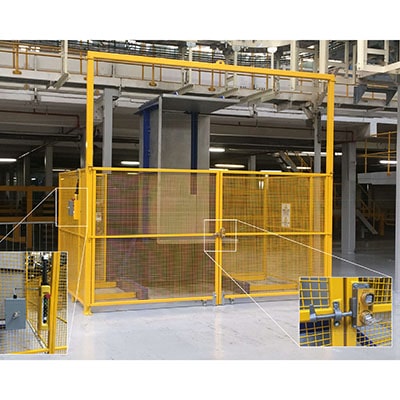
I have seen the "before and after" in so many factories. Before automation, the pallet exchange area is often a bottleneck. It’s chaotic and requires several staff members. After installing a fully automated pallet inverter system, the same area is calm and efficient. A single operator might oversee the process from a control panel, or the system might run completely on its own, integrated with conveyors. The transformation is not just about speed; it's about control. You gain control over your process, your hygiene, and your costs.
Taking the "Human Element" Out of Contamination
Humans are the biggest source of contamination in any clean environment. We carry bacteria on our hands, our clothes, and our shoes. Every time a worker has to manually touch a pallet, a box, or the product itself to restack a load, they are introducing a potential hazard. An automated pallet inverter performs the entire exchange process within a contained system. The load enters on one pallet, is securely clamped and inverted, and exits on a new, clean pallet.
This is especially critical when moving goods from a general warehouse area to a high-care or cleanroom production zone. An automated inverter can be installed as a pass-through system right in the wall. Goods arrive on a wooden "warehouse" pallet, are transferred to a hygienic plastic or metal "production" pallet, and then move into the clean area. This creates a physical barrier that prevents contaminants from being carried in on dirty pallets. It's a simple and incredibly effective way to uphold your hygiene protocols.
Calculating Your Return on Investment (ROI)
Investing in automation can seem expensive, but a proper ROI calculation will show that it pays for itself. You need to look beyond the initial purchase price and consider all the savings.
Here’s a simple breakdown of where the savings come from:
- Labor Costs: Calculate the annual salary and benefits of the 2-3 employees who currently handle pallet exchange. An automated system can often be run by a single operator part-time, or not at all.
- Product Damage: Manual handling leads to dropped boxes and damaged goods. An automated system handles loads gently and consistently, reducing these losses.
- Worker Injury: Back injuries from manual lifting are common and costly. Automation eliminates this risk, saving you money on insurance claims and lost workdays.
- Throughput: An automated system is much faster than a manual team. It can increase the number of pallets you process per hour, eliminating bottlenecks and boosting overall production capacity.
Let's look at a sample ROI:
| Cost / Saving Area | Manual Process (Annual) | Automated Inverter (Annual) | Annual Savings |
|---|---|---|---|
| Labor (2 workers) | $30,000 | $5,000 (supervisor) | $25,000 |
| Product Damage | $5,000 | $500 | $4,500 |
| Injury/Insurance Risk | $2,000 (estimated) | $0 | $2,000 |
| Increased Throughput | N/A | (Value of 20% faster line) | $15,000 (example) |
| Total Annual Savings | $46,500 |
If the automated system costs $90,000, the payback period is less than two years ($90,000 / $46,500). After that, the $46,500 in savings goes directly to your profit margin every single year.
Integrating with Your Existing Line
The highest level of efficiency comes from full integration. An automated pallet inverter shouldn't be a standalone island. It should be a seamless part of your production flow. This is achieved by connecting it with roller or chain conveyors on the infeed and outfeed. Sensors detect when a pallet arrives, and the Programmable Logic Controller (PLC) initiates the exchange cycle automatically. Once complete, the new pallet is discharged onto the outbound conveyor and continues down the line. This creates a "lights-out" operation for pallet exchange, requiring no human intervention at all. This level of automation provides the maximum ROI and the highest level of hygienic security.
What are my insights on selecting a long-term pallet inverter partner for the Thai market?
You've done the research. You know you need a stainless steel, electro-mechanical, automated pallet inverter. You have quotes from three different suppliers. They all look similar on paper. How do you choose? The machine is only one part of the equation. You are not just buying steel and motors; you are entering into a long-term relationship. A machine like this will be in your factory for 10-15 years or more. The supplier you choose today will be the partner you rely on for service, parts, and advice for the next decade.
My most important insight, learned over decades of building my own business, is this: You must choose a strategic partner, not just a vendor. A vendor sells you a box and disappears. A partner invests in your success. They understand the specific challenges of the Thai market, they have local support available, and they work with you to ensure the machine delivers value year after year. Their success is tied to your success.
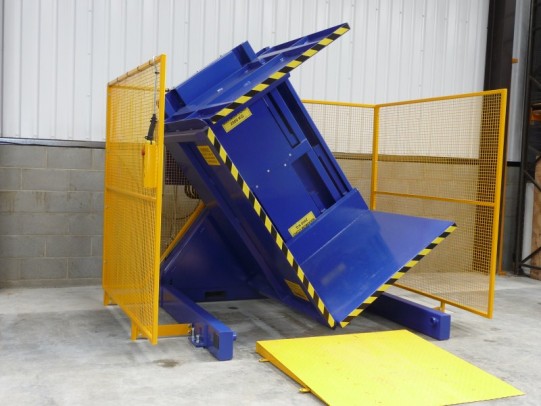
When I first started my factory, I made the mistake of buying a critical machine based only on the lowest price. The company was on the other side of the world with no local presence. When we had a breakdown, we lost three weeks of production waiting for a part and trying to get support over the phone at odd hours. It was a painful lesson. I vowed to never let price be the only factor again. I learned that the value of a reliable partner with strong local support is worth far more than any small, upfront saving. That experience shapes every piece of advice I give my clients today.
Beyond the Machine: The Importance of a True Partner
A strategic partner understands your industry and your region. When you talk about GMP in Thailand, they should know exactly what you mean. They should have experience with other food and pharma companies in Southeast Asia. This experience is invaluable. They can offer advice on the best configuration for your specific product and workflow, because they've likely solved a similar problem before.
This partnership extends far beyond the sale. It includes:
- Installation and Commissioning: A good partner will have skilled technicians, either locally or regionally based, to install the machine and ensure it runs perfectly with your existing line.
- Training: They will thoroughly train your operators and maintenance staff, not just on how to run the machine, but on how to care for it to maximize its lifespan.
- After-Sales Support: This is the most critical part. When you have a question or a problem, how quickly can you get a qualified technician to help? A strong local or regional support network is non-negotiable.
Key Questions to Ask a Potential Supplier
To find out if a supplier is a true partner, you need to ask the right questions. Don't just focus on the machine's specs. Dig deeper into their service and support structure. Here is a checklist I use:
| Category | Key Question | What a Good Answer Looks Like |
|---|---|---|
| Local Presence | What is your after-sales support structure in or near Thailand? | "We have certified technicians based in Bangkok/regionally who can be on-site within 24/48 hours. We also stock critical spare parts locally." |
| Experience | Can you provide references from other food/pharma companies in this region? | "Yes, we have worked with companies A, B, and C. We can share a case study or connect you with them." |
| Installation | Who will be responsible for installation and training, and what is the process? | "Our own certified engineers will manage the full installation and commissioning. Training for operators and maintenance is included and will take X days." |
| Spare Parts | What is the availability and lead time for critical spare parts? | "We have a recommended spare parts list. Common wear parts are stocked locally, and others can be shipped express within 72 hours." |
| Technical Support | Do you offer a remote support or diagnostics service? | "Yes, our machines can be equipped with a remote access module so our technicians can diagnose issues online, often solving problems without a site visit." |
My Personal Take on Future-Proofing Your Investment
Finally, a good partner helps you think about the future. Your business will grow and change. Will your pallet inverter be able to adapt? I always advise looking for modular designs. Can you add automation features like conveyors later? Can the software be updated? Is the machine built with a capacity that allows for future increases in production volume?
Choosing a supplier who thinks this way is choosing a partner for growth. They are not just selling you a solution for today's problem; they are providing a platform for tomorrow's success. This is the difference between a simple purchase and a strategic investment. In an industry as demanding as food and pharma, making the right choice in your partners is everything.
Conclusion
Choosing the right pallet inverter for Thailand's food and pharma industries comes down to three things: prioritizing hygienic design for compliance, selecting the right technology, and finding a true long-term partner.
